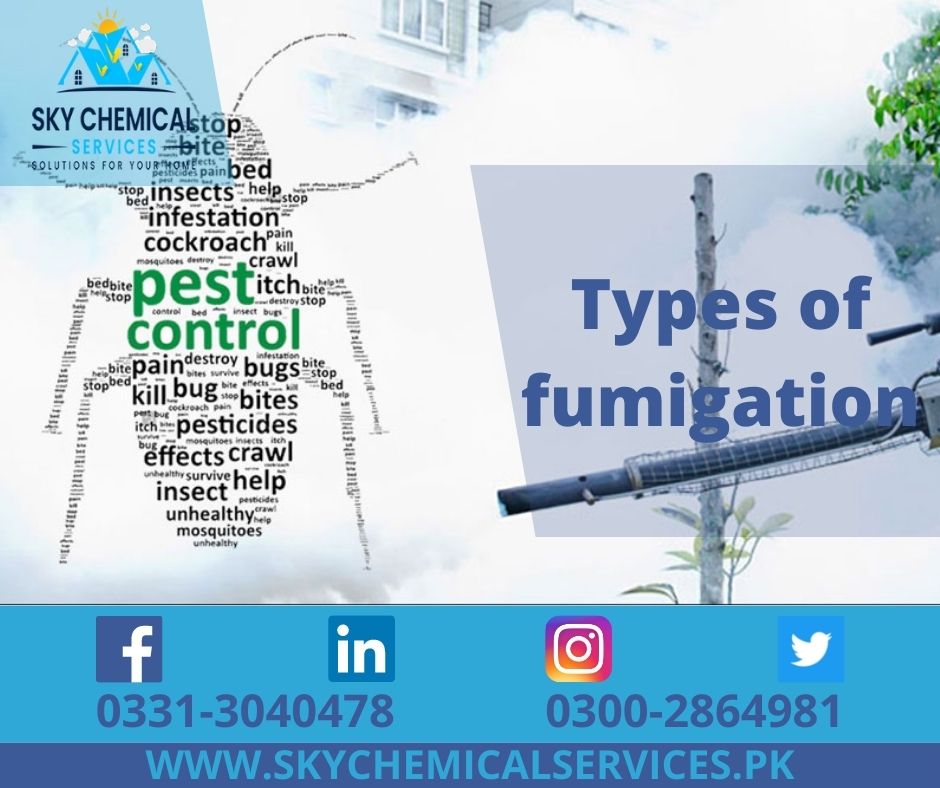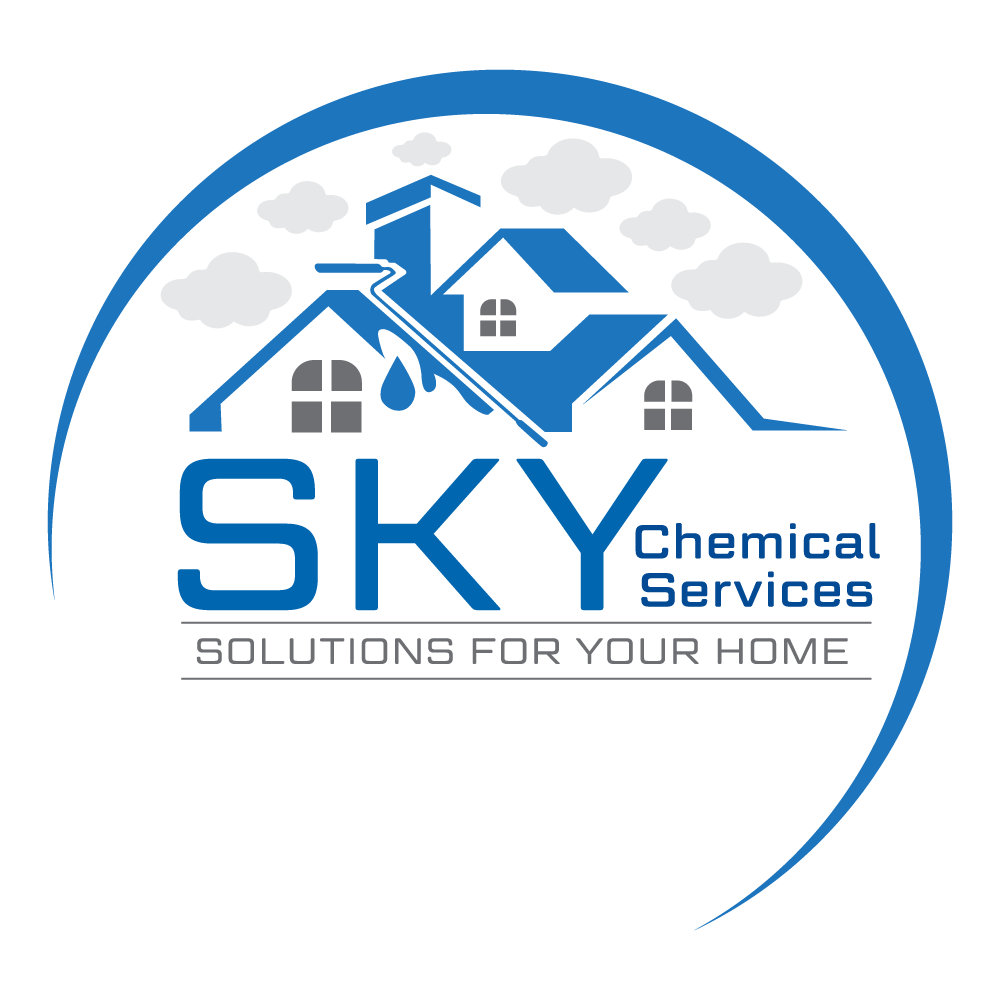
Fumigation Pest Control process that entirely fills an area with gaseous pesticides or fumigants to suffocate or poison the pests within. The whole process takes around 24 to 72 hours for completion. There are various methods through which the process of fumigation can be handled.
Gas Fumigation
This process is one of the most popular fumigation techniques deployed for pest management services. The whole procedure is odorless and require strict safety precautions and procedures. The Environmental Protection Agency (EPA) aids in maintaining health standards and regulates the use of gas fumigants in different areas and structures.
There are many different types of fumigants. For example, Sulfuryl fluoride, is used to fumigate agricultural items like tree nuts, dry fruits, and cereal grains. Gaseous fumigants like vicane and methyl bromide are used to kill insects, rodents, nematodes, and plant pests. Their application procedures are likewise different, and only an expert should utilize them. Professional use is required since it helps to avoid dangerous gas exposure. It is required to tent structures or locations where gas fumigants will be utilized. This confines the gas at a concentration that allows it to pass through target materials and tight spaces. After fumigation, you are not permitted to enter the structure, whether commercial, residential, or agricultural.
Liquid Fumigation
This is a different sort of fumigation that has the same goal of eradicating pests. These fumigation pest control, unlike gas fumigants, are liquid-based and are used in a variety of ways to combat mold, insects, and other pests. A sprayer is one of the most critical pieces of equipment for spraying liquid fumigants. Liquid fumigants are unique in two ways. That is to say, they are usually combustible and poisonous to humans and animals. It is critical to understand this in order to avoid fires and other dangerous situations. Outdoor areas, such as farms and orchards, are where liquid fumigants are most commonly utilized.
This method of fumigation can also be done in confined spaces. In contrast to outside conditions, where mist from spraying such fumigants dissipates quickly, mist from spraying such fumigants takes longer to dissipate within enclosures. The general norm is to stay a safe distance during fumigation until such places are deemed safe to enter. When utilizing liquid fumigants, extreme caution is required. Wearing protective clothing and reading the safety instructions that come with such products are examples of this.
Some of the chemicals in liquid form are Methyl bromide, carbon disulfide, ethylene dichloride and others. These are highly effective liquid fumigants that can be utilized in a variety of pest situations.
Solid Fumigation
This is the third sort of fumigation, and it’s used to deal with specific insect problems. The type of pest problem decides which fumigation method should be used, one of which is solid fumigation. Solid fumigants exist in a variety of shapes and sizes.
Powder, pellet, and tablet forms are available. Solid fumigants aren’t used in an indiscriminate manner. Rather, it is measured and used with caution, just like other fumigants. A certain quantity of solid fumigants will cover or suffice for a particular area. So, what is the perfect and necessary dosage to cover a specific area?
Step by Step Process to follow when fumigating a kitchen?
Operation Theatre Sterilization by Fumigation
How to Prepare your Home for Tent Fumigation?
Warning Agent
A structure or target area must be clear of pets or other humans before gas fumigants are placed or pumped into it. That is, unless the technician is dressed in protective gear. This was stated briefly earlier. Because most types of gas fumigants are odorless, this is critical. This could put people within a building at risk at the time of application. A warning agent like Chloropicrin, on the other hand, can assist prevent this from happening. Unlike fumigants, this gas is an irritant that keeps people and animals away.
Classes of Chemicals Used for Fumigation
The need for classification of fumigants was determined due to their various degrees of hazard. To put it another way, there are fewer but more dangerous insecticides. This is done to account for the toxicity of the active substances.
As a result, we’ll talk about these classes here. This will assist you in distinguishing between fumigants that are highly harmful and those that are less dangerous. The World Health Organization and the Globally Harmonized System of Classification and Labeling (GHS) have partnered. This is for the purpose of developing a comprehensive fumigant classification system.
Fumigants have been categorized as Extremely Hazardous, Highly Hazardous, Moderately Hazardous, Slightly Hazardous, and Unlikely to Present Acute Hazard as a result. Let’s take a quick look at each of these.
Extremely Hazardous Chemicals
Fumigants in this category are extremely harmful to human health. As a result, the usage of such substances is strictly controlled. Before using them, you’d need to be well-trained. When we talk about such compounds, we’re referring to the active substances that are of technical grade. Aldicarb [ISO], Brodifacoum [ISO], and Bromadiolone [ISO] are examples of technical grade active ingredients. Bromethalin [ISO], Calcium Cyanide [C], Captafol [ISO], Chlorethoxyfos [ISO], and Chlorophos [ISO] are among the other chemicals.
Highly Hazardous Chemicals
The fumigants in this category are also extremely hazardous. Though not as harsh as the examples we’ve just discussed. Several technical-grade active compounds are present in such insecticides. Some of them include, Acrolein [C], Allyl alcohol [C], Azinphos-ethyl [ISO], Azinphos-methyl [ISO], and Blasticidin-S are just a few of them.
Moderately Hazardous Chemicals
Certain fumigants contain moderately dangerous substances. Despite the fact that they are not as dangerous as the ones mentioned above, extreme caution should be exercised. Both professionals and non-professionals utilize fumigants of this type. These come with instructional booklets for non-professionals on how to use them. To improve safety and achieve objectives, such information should be completely grasped and absorbed. You’d find such mild fumigants in stores as an unlicensed user. But how do you know which ones are which? Dichlorvos, oil of red cedar, paradichlorobenzene, naphthalene, and a variety of other names are used to describe these chemicals.
Slightly Hazardous
Certain fumigants are effective, despite the fact that they are slightly toxic to people. Such fumigants are in higher demand, particularly among unlicensed individuals. Unlicensed refers to individuals who have not received professional training in the use of fumigants. These insecticides comprise a number of active chemicals that will not be discussed further here. Several of these can be found in stores. If you’re not sure what to look for, the terms Vapona, DDVP, or NUVAN PROSTRIPS will come in handy. It makes no difference what amount of education you have as long as you can read. Such products have been made available as an alternative to traditional pest control procedures.
Loose Acute Hazards
This type of fumigant is the safest to use and pose little or no health risks. However, it depends on the use.
How Long Do I Need to Stay Out of my House After Structural Fumigation?
Fumigation and General Pest Control. What’s the difference?
Commercial Fumigation – All you need to know
Conclusion
Fumigation Pest Control are a great product, whether they are termites, lice or any other living organisms. They come in five different types, including extremely hazardous, highly hazardous, moderately hazardous, slightly hazardous and loose acute hazard. Apart from that, there are different types of fumigation processes, some of them are gas, liquid and solid.
If you want to know more about our services, visit (https://skychemicalservices.pk/)
